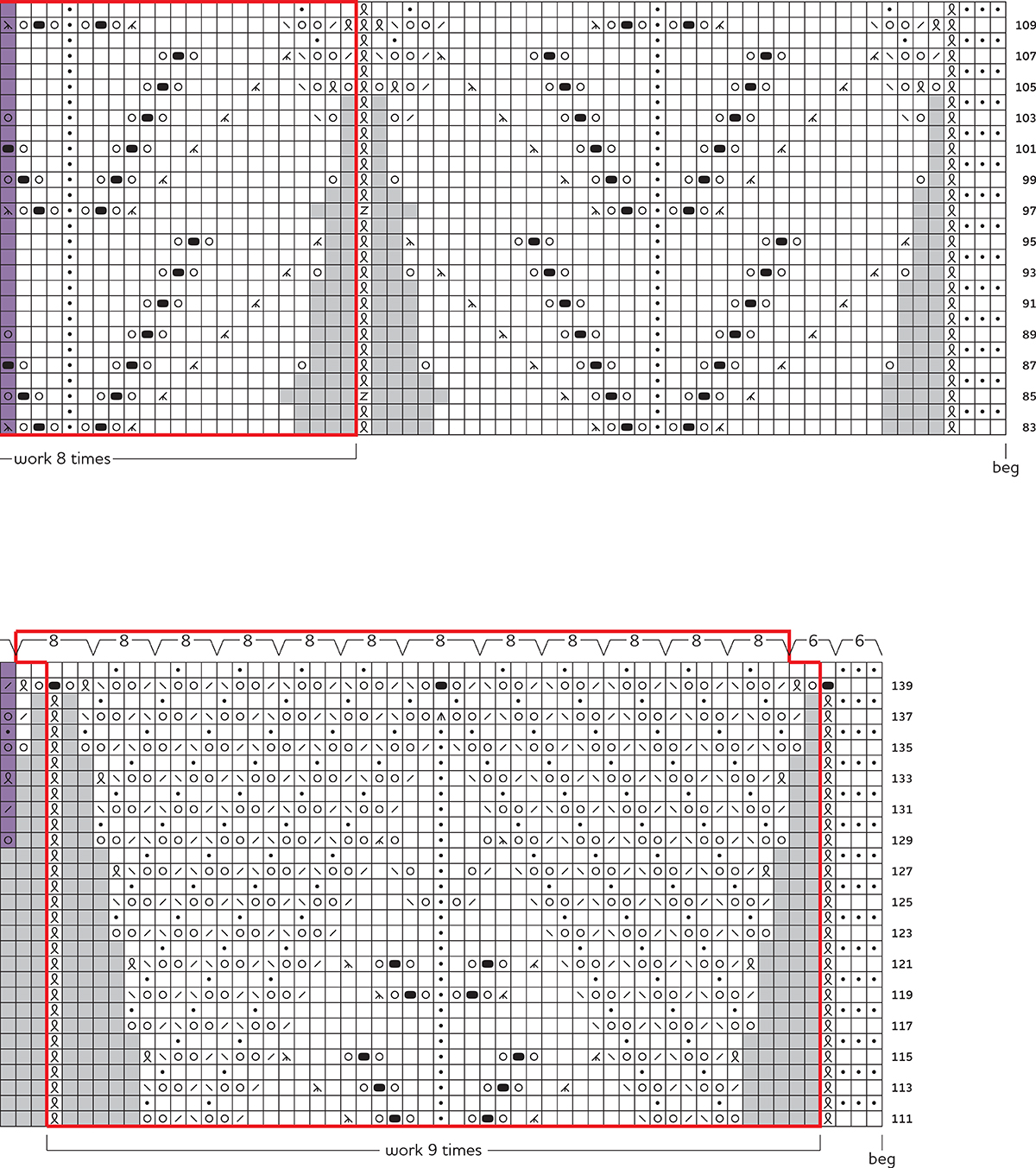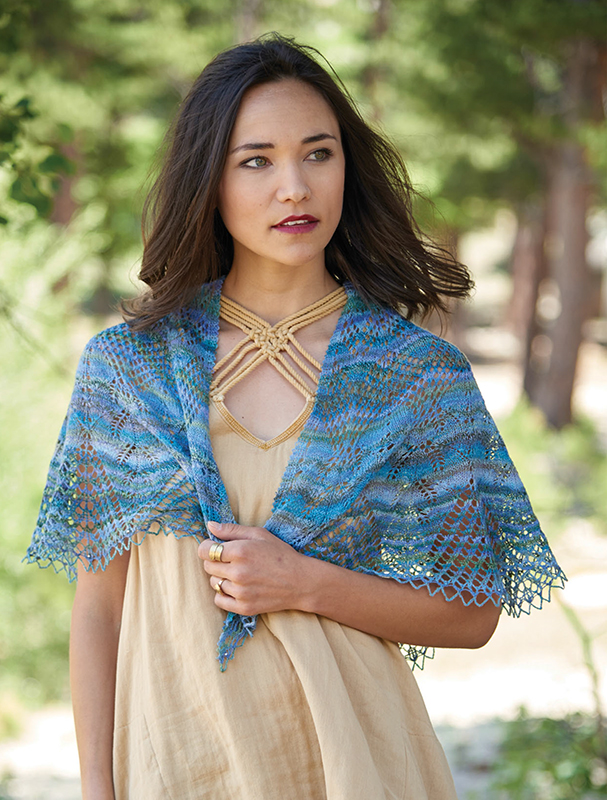
Aconcagua, in the Andes mountains of Argentina, is the highest mountain on the South American continent, at 22,837 feet (6,961 m). The first recorded ascent was in 1897 by a British expedition. It continues to be a popular climbing destination, and the youngest person documented to have reached the summit of Aconcagua was a nine-year-old, in 2013. The oldest documented climber was an eighty-seven-year-old, in 2007.
This project gives directions for a handspun version and one knit with a commercially available yarn in the identical fiber. The handspun version omits the beads, which are used liberally in the commercially available yarn version! There are two different bind-off options. The “EyeBrow” bind-off takes longer and uses more yarn, but it is well worth the effort. The handspun version shows the Gathered Crochet bind-off and the other shows the “EyeBrow.”

Handspun version: 401⁄2" (103 cm) wide and 191⁄2" (49.5 cm) deep at center back. Malabrigo Lace version: 36" (91.5 cm) wide and 171⁄2" (44.5 cm) deep at center back.
Malabrigo Nube (100% merino spinning fiber; 4 oz [113 g]): #NUB416 Indiecita.
0.9 to 1 oz drop spindle; small (sample size) niddy-noddy to skein spindle-spun yarn.
OR
Laceweight (#0 Lace).
Shown here: Malabrigo Lace (100% baby merino; 470 yd [430 m]/50 g): #LMBB039 Molly, 2 skeins.
Size U.S. 2 (2.75 mm): 40" (100 cm) circular (cir). Adjust needle size if necessary to obtain the correct gauge.
Smooth waste yarn for provisional cast-on; 8/0 Japanese seed beads: 21 beads for handspun version in Miyuki galvanized silver; 20 g for Malabrigo Lace version in Matsumo 823 gold-luster transparent pink/cinnamon; size U.S. 14 (0.6 mm) steel crochet hook, or size to fit beads; size U.S. 0 (1.75 mm) steel crochet hook for crochet bind-off; markers (optional); tapestry needle; stainless T-pins; blocking mats; three 60" (152.5 cm) lengths of flexible blocking wire.
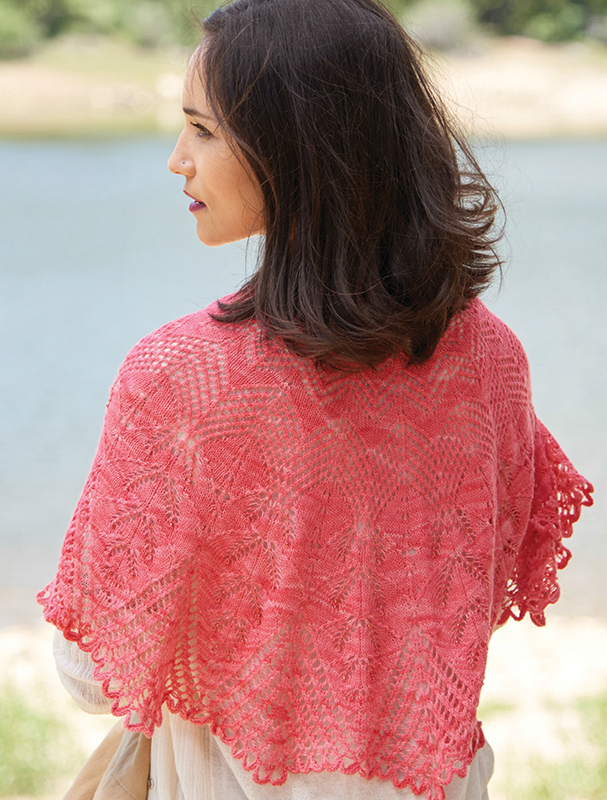
20 sts and 32 rows = 4" (10 cm) over St st, blocked and relaxed.
Beads: See Techniques.
Gathered Crochet Bind-Off: See Techniques.
A word about slipping selvedge stitches: Don’t! This piece was designed to block freely and slipped selvedge stitches will create a less flexible edge
To prepare the fiber for spinning, unwind the hank of fiber and pull off a long, thin strip. Attenuate the fiber by gently grabbing sections and pulling it lengthwise, to loosen the fiber and make your strip as light and thin as practical. Tip: For the first spindle full, pull off as thin a strip as is comfortable, then for each time after that make the strip just a little thicker, allowing the colors to form stripes as you knit. Because the rows get longer as you work, the lengths of colors get longer as you spin using this method. Spin one entire strip using a lightweight drop spindle.
Andean ply the spindle cop for a balanced laceweight 2-ply.
Wind off your yarn using a sample niddy-noddy, secure the ends, soak it in cool water, and then dry unweighted.
Repeat for each strip.
Begin knitting using the skeins in the order that you spun them, joining each new skein as you come to the end of the previous skein. You can spit-splice or just overlap the two ends for three stitches and then weave them in at the end.
CO 3 sts using provisional method (see Techniques).
Knit 11 rows.
Next row: K3, do not turn work, but rotate piece 90 degrees right, then pick up and purl 5 sts along the left side edge (1 st in each garter ridge), turn the work another 90 degrees right and pick up and knit 3 sts in provisional CO, removing waste yarn—11 sts.
Turn work.
Next (inc) row: K3, [k1f/b] 5 times, k3—16 sts.
Next row: K3, p10, k3.
Next row: (RS) Work Row 1 of chart A as foll: beg at right edge of chart and work 4 sts before rep, work 2-st rep 10 times, then work 3 sts at left edge of chart after rep—27 sts.
Next row: Work Row 2 of chart, beg at left edge of chart and work 3 sts before rep, work 2-st rep 10 times, then work 4 sts at right edge of chart after rep.
Work Rows 3–50 of chart A as established—186 sts.
Work Rows 51–82 of chart B—307 sts.
Work Rows 83–110 of chart C—387 sts.
Work Rows 111–140 of chart D—507 sts.
BO using one of the foll options:
Gathered Crochet BO: [Gather 3 sts, ch 6] 2 times, *[gather 4, ch 8] 5 times, gather 5, ch 8, [gather 4, ch 8] 5 times, gather 5, ch 8; rep from * 8 more times, [gather 4, ch 8] 5 times, gather 5, ch 8, [gather 4, ch 8] 4 times, gather 4, ch 6, gather 3, ch 6, gather 3. Cut yarn leaving a 9" (23 cm) tail, pull tail through rem st.
EyeBrow BO: [K3togtbl, cable CO 6 sts (see Techniques)] 2 times, *[k4togtbl, cable CO 8] 5 times, k5togtbl, cable CO 8, [k4togtbl, cable CO 8] 5 times, K5togtbl, cable CO 8; rep from * 8 more times, k4togtbl, cable CO 8] 5 times, k5togtbl, cable CO 8, [k4togtbl, cable CO 8] 4 times, k4togtbl, cable CO 6, k3togtbl, cable CO 6, k3togtbl—1,091 sts.
Next row: (WS) Knit.
BO row: (RS) [K2togtbl, return st to left needle tip] to last 2 sts, k2togtbl. Cut yarn leaving a 9" (23 cm) tail, pull tail through rem st.
Weave in ends but do not trim. Soak in cool water until fully saturated (about 30 minutes). Press to remove water, roll in a towel and blot to remove extra water.
Weave one long blocking wire along top edge, and two rem wires through crochet or “eyebrow” loops along bottom edge. Pin out schematic measures, creating gentle scallops along bottom edge. Allow to dry completely. Shawl will relax to finished measurements after removing pins. Trim ends.

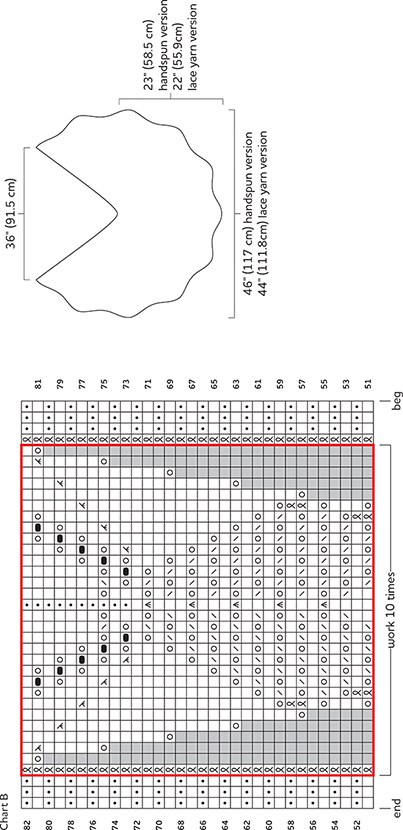
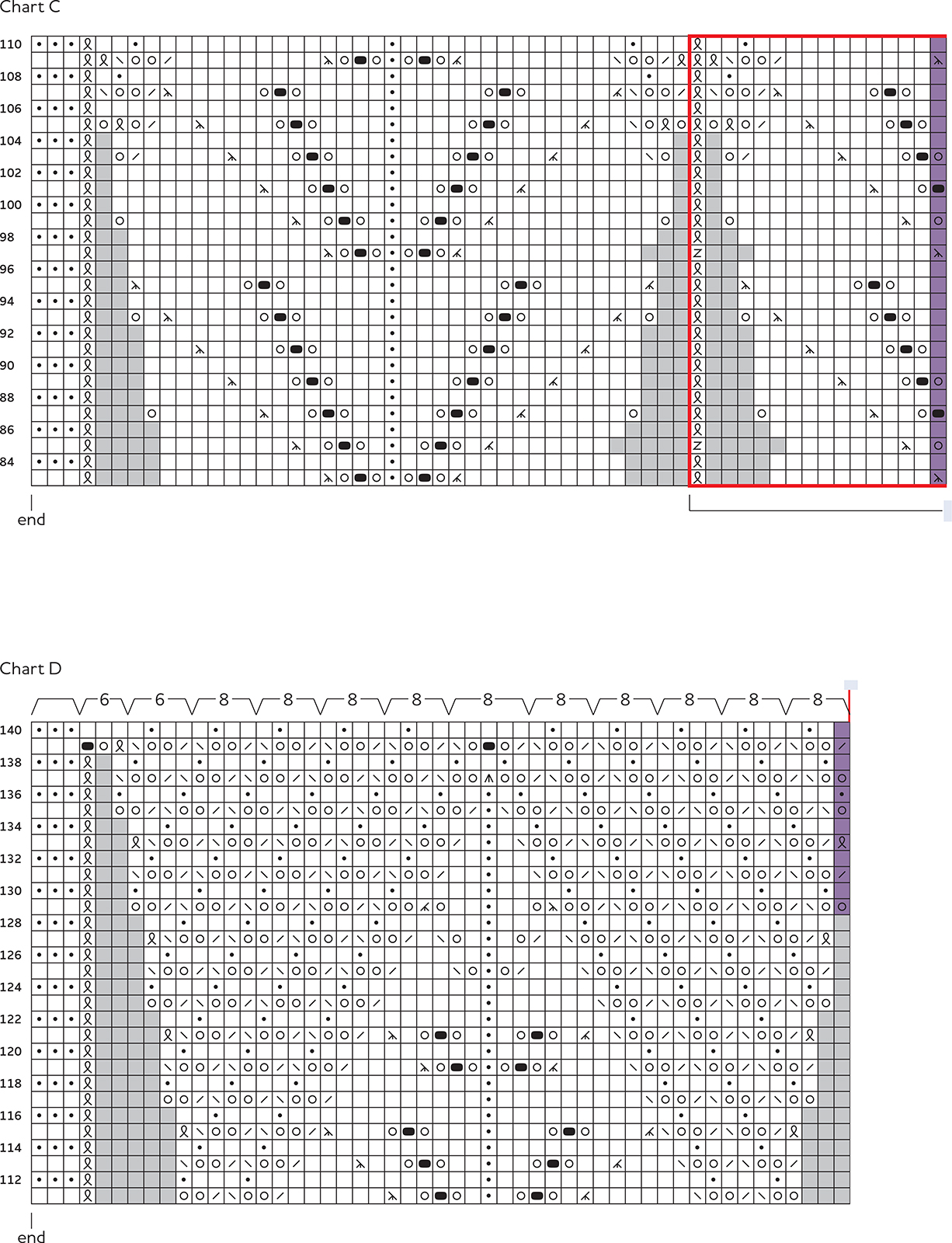
Note: Stitches shaded purple are duplicated for ease of following the two halves of the chart; work the shaded stitches only once.
